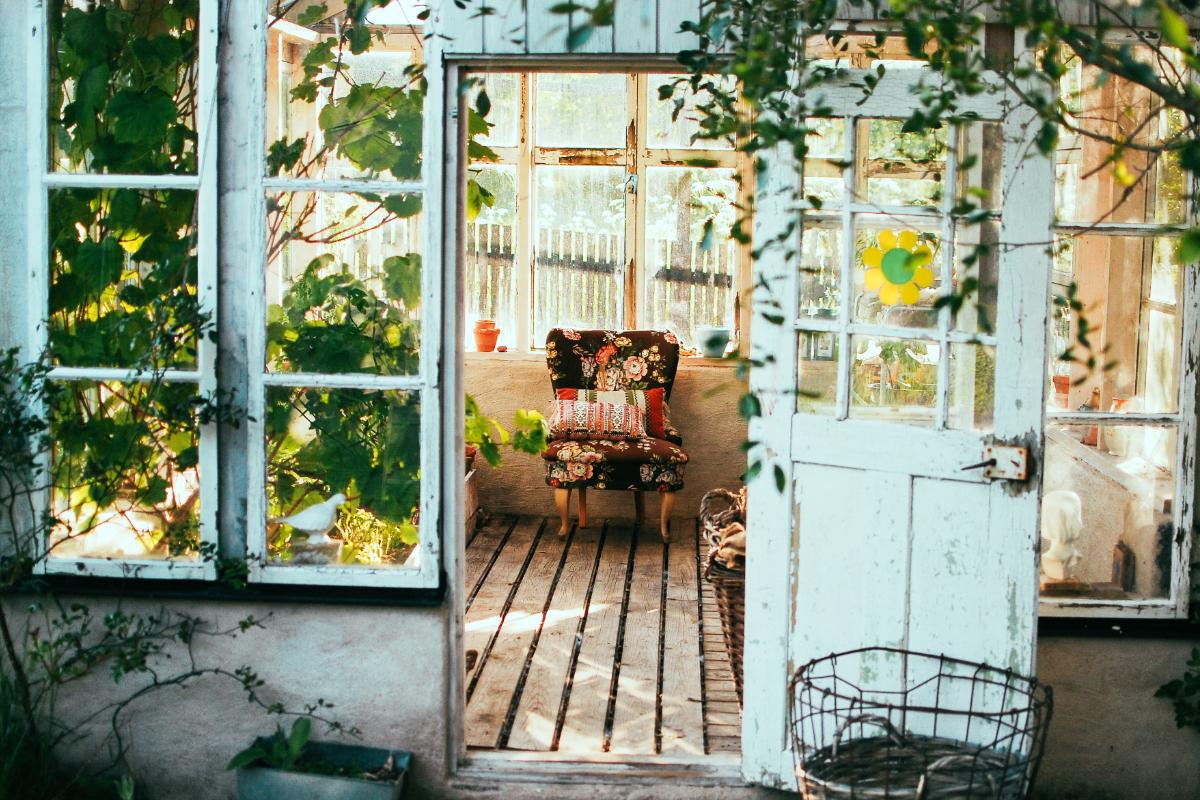Putting down roots in a rented property can sometimes be a challenge. How long will you be there? Will you be able to afford a rent increase? Will your family outgrow your current home?
And when it comes to your garden, those questions may plant a seed of doubt in your mind. How much time, money and effort should you invest to make your outdoor space a pleasant place to be?
Here we explore who’s responsible for what in the gardens of rented properties and how you can create your own personal oasis.
Include Gardening in Your Tenancy Agreement
Whether you look out over a patch of bare concrete or a beautifully manicured lawn, it’s important to know who needs to do what in your rented home’s garden.
If these boundaries aren’t clear, it can lead to unwanted disputes between tenant and landlord. It can be a thorny issue. Research shows that in 2017 16% of all tenancy deposit deduction disputes were related to gardening.
The key is to make sure your tenancy agreement is crystal clear. Make sure you know who is responsible for:
Mowing the lawn
Pruning trees
Weeding the borders
Maintaining and fixing the fences
Disposing of garden waste
Cleaning decking and patios
In addition, make sure additional questions are answered:
Can the garden be used for social gatherings or ball games?
Can pets access the garden?
Which areas are covered by the agreement?
Is responsibility shared with any other tenants?
Can any permanent alterations be made?
Do temporary changes need written permission?
What are the repercussions if you damage or neglect the space?
Depending on the size of the garden and your own interest in it, a thorough, watertight agreement with all the necessary detail is essential to avoid potential misunderstandings. And if anything crops up which isn’t covered by your agreement, speak to your landlord and check before heading out with your spade.
Your Garden Maintenance Responsibilities
Every agreement will of course differ but the minimum level of garden duties usually includes keeping it tidy, litter-free and not overgrown. So, don’t store bags of rubbish and old furniture out there and keep on top of excessive weeds.
If you want to change the garden in any way, you must get your landlord’s approval beforehand. If you dig up turf to extend a border or paint the fence a different colour without permission, you could be charged to return the garden to its original state.
At the end of a tenancy, you’ll generally only be responsible for the garden being in the same state it was in at the start. If it was a jungle 12 months ago, then it’s unreasonable for your landlord to expect it to be a slice of horticultural paradise now.
Be aware that the property’s inventory will likely include photographs of the garden when you first moved in. Landlords can use these to compare its condition at a later date: a tenant’s idea of tidy may differ from theirs …
Your Landlord’s Garden Maintenance Responsibilities
In general, your landlord will be responsible for maintaining any part of the garden which requires specific expertise. For example, your landlord would need to arrange for a tree surgeon to remove any dangerous overhanging branches or a landscape gardener to lay a new patio.
As with inside your property, it also falls to them to take action once you’ve reported an issue out of your remit. Conversely, during their regular property inspections, whether they carry these out themselves or through their agent, landlords can spot any potential issues early and flag them with you.
Some portfolio landlords hire a professional gardener to make the job easier for everyone. The cost is usually applied to tenants’ monthly rent and the service should be consistent for the length of the tenancy term.
How to Personalise Your Garden
The garden at your rented property can be so much more than a place to hang washing and store the bins. With a little creativity and only a couple of green fingers, it can become your own slice of heaven.
Whether you’re there for six months or six years, you’re likely to be paying a premium for precious outdoor space so it makes sense to give it some TLC.
Once you’ve established with your landlord what you can and can’t do out there, take your pick from these ideas:
Set up a socialising spot
Start with the important stuff: a couple of chairs and a table plus a BBQ will immediately make your garden look more inviting. You’ll soon be inviting friends round to share stories, sausages and a refreshing drink.
Add accessories
Accessories can add atmosphere and individuality to any outdoor space. And the added bonus? You can take them with you when you move on.
Drape solar-powered lights around shrubs and along fences, put up some colourful bunting or mirrors, or hang lanterns to create a more personalised space. You can even hide those unsightly bins inside a wooden bin store or use foliage or flower-design stickers to make them look more appealing.
Plant up pots
You don’t have to be a gardening genius to introduce some plants into your garden. A bare border can burst into life simply by sprinkling a few packets of wildflower seeds. A drab wall can be transformed by a couple of ready-planted hanging baskets (just check your landlord is OK about attaching the bracket) and, of course, pots of bright flowers can sit happily on a patio with very little effort.
Freestanding containers can be filled with ready-grown flowers, herbs and veg or transplanted seedlings which started life on a warm windowsill inside. You can move the pots around your garden – for example, a climber can be placed in front of a dull fence - and can take them with you when your tenancy ends.
Introduce storage
Extra storage is always welcome, whether indoors or outdoors. There may already be a shed if your landlord has provided a lawnmower and tools to do the basic maintenance tasks. If not, a weatherproof storage box can prove handy to store various odds and ends.
And if you’re a cyclist, ask your landlord if they can supply a safe place to keep it. A cycle store will add to the property’s appeal when they’re hunting for the next tenants after you.
If you’re lucky enough to have a garden in your rented home, treating it like an extra room in the house can open up all possibilities. Check your tenancy agreement, keep your landlord informed of any plans and the grass will be greener on your side of the fence.
For more tips about making your rented property feel like home, check out MakeUrMove’s blog.






